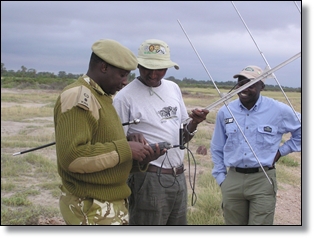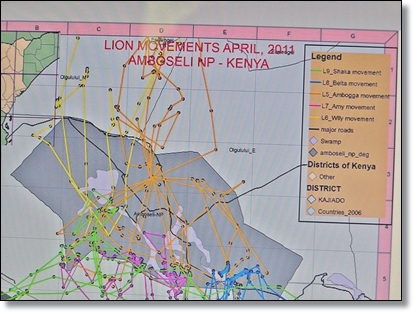ICTs and Environmental Safety

 |
| Rangers using a transmitter Photo courtesy |
According to Stephen Muniu, a research scientist at the Amboseli National Park, the Maasai community living within the park have been killing the lions eying upon livestock, the Maasai’s only source of livelihood. Iregi Mwenja, The Kenya country manager of a local charitable organization called Born Free Foundation says that human -wildlife conflict is a great concern. The foundation lobbies for conservation of wildlife and has put up lion proof Bomas to reduce human-wildlife conflict.
 |
ICTs are crucial in such areas as weather prediction and bird monitoring. Ornithologists for example, tag birds with satellites to monitor their migration patterns right on their computers.
Other areas where ICTs have been of great help is in mobile telephony. With 635 million people in Africa connected, Hezron Gikanga, Group Head, Environmental Social Management Policy (ESMP) and Regulatory Information Support from Airtel Africa Group ensure that all connection related activities comply with environmental standards within the African region where Airtel networks spread. Some of the countries include, Burkina Faso, Chad, Congo Brazzaville, Congo DR, Gabon, Ghana, Kenya, Madagascar, Malawi, Niger, Nigeria, Rwanda, Seychelles, Sierra Leone, Tanzania, Uganda and Zambia.
According to Hezron, mobile telephony is an enabler of economic and social development far beyond its domain as evidenced by the evolution of important innovative and efficient value added services in commerce, health, agriculture and education. Key structures in all these is the need to be in harmony with environmental integrity. For example a mast cannot be erected in a protected area area or where a wetland passes.
A lot needs to be done regarding E-waste management. The more ICTs come our way, the more lots of E-waste is generated. Having no clear regulations on how E-waste should be managed poses a risk. Prone to environmental catastrophes, Africans need to fully make use of ICTs to help them solve their environmental problems. The adoption should however conform to sound environmental discipline.
By Mary Mwendwa,
TransWorld Radio.
